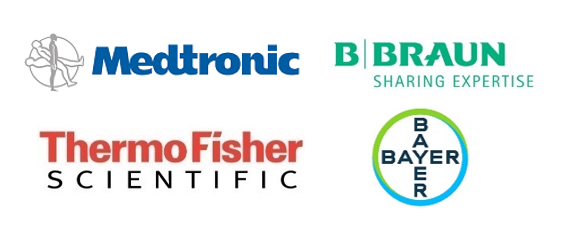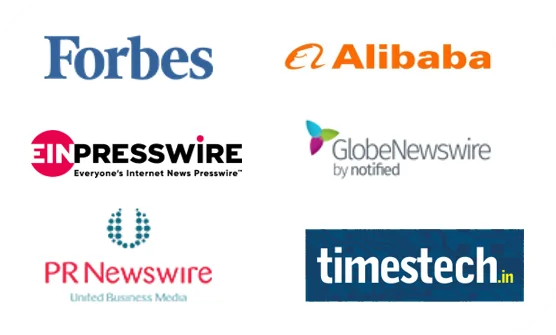Market Overview:
"The global topical wound agent market was valued at US$ 1.7 billion in 2024 and is expected to register a CAGR of 6.1% over the forecast period and reach US$ 2.9 billion in 2033."
|
Report Attributes |
Details |
|
Base Year |
2024 |
|
Forecast Years |
2025-2033 |
|
Historical Years |
2021-2023 |
|
Topical Wound Agent Market Growth Rate (2025-2033) |
6.1% |
Topical wound agents serve a crucial role in wound care by promoting healing, preventing infection, and reducing pain. These are vital for addressing various types of wounds, from cuts and burns to chronic ulcers. These agents create an optimal environment for tissue regeneration, minimizing complications and aiding in faster recovery. Factors driving demand include rising incidence of wounds due to lifestyle factors, increasing awareness of wound care, and advancements in wound management technology, making these indispensable for effective wound treatment and patient comfort.
The global topical wound agent market is registering steady revenue growth due to rising number of wound cases and advancing wound care practices. Market revenue growth is driven by aging population, chronic disease prevalence, and surgical procedures. In addition, innovations such as antimicrobial agents and advanced wound dressings enhance healing outcomes, thereby driving revenue growth of the global market. Governments and healthcare institutions support wound management initiatives, promoting research and awareness.
Moreover, market revenue growth is attributable to blend of scientific progress, improved patient outcomes, and healthcare sector commitments, driving significant role of the product in modern healthcare practices.
Topical Wound Agent Market Trends and Drivers:
Rising Prevalence of Chronic Wounds: The global wound care market is registering steady revenue growth due to increasing prevalence of chronic wounds, including diabetic ulcers and pressure sores. This rise in chronic conditions necessitates effective wound care solutions, driving demand for advanced wound care products and treatments.
Aging Population and Chronic Conditions: Demographic shift towards aging global population is leading to a higher prevalence of chronic health conditions. This demographic trend raises awareness regarding the importance of robust wound management solutions to address the specific needs of elderly patients, contributing to revenue growth of the global wound care market.
Technological Advancements Driving Innovation: Rapid advancements in wound care technologies are determining the market landscape. Innovations such as bioactive dressings, negative pressure wound therapy, and smart wound monitoring systems are expanding the range of treatment options available, elevating patient outcomes and driving market revenue growth.
Increased Focus on Outpatient Care: Evolving healthcare industry, with rapid shift towards outpatient care and home healthcare settings, is creating high demand for wound care products that are easy to administer outside of obsolete hospital environments. This change in patient care settings is driving demand for convenient and effective wound care solutions.
Rising Awareness Among Stakeholders: High awareness among healthcare professionals, patients, and caregivers about the critical role of timely wound intervention and management is positively impacting market revenue growth. Early recognition of wound issues and proactive treatment adoption are driving the utilization of wound care products.
Collaborations for Product Development: Strategic collaborations and partnerships between healthcare organizations, research institutions, and wound care product manufacturers are encouraging the development and distribution of cutting-edge wound care solutions. These collaborations enhance market accessibility to innovative products, supporting market revenue growth.
Topical Wound Agent Market Restraining Factors:
Regulatory Hurdles: Stringent regulatory requirements for wound care products can slow down the approval process, delaying product launches and market entry.
High Research Costs: Developing and testing innovative wound care formulations and technologies can lead to substantial research and development expenses.
Limited Reimbursement: Inadequate reimbursement policies for wound care products in certain regions can discourage patients and healthcare providers from adopting advanced solutions.
Allergic Reactions: Sensitivity to certain wound care agents may lead to allergic reactions in some individuals, affecting patient compliance and product preference.
Market Fragmentation: A plethora of wound care products available in the market can create confusion for both patients and healthcare professionals, affecting product adoption.
Topical Wound Agent Market Opportunities:
Advanced Formulations: Development of novel wound care formulations, including growth factors, antimicrobial agents, and regenerative materials, opens avenues for high-value products catering to specific wound types.
Personalized Wound Care: Customized wound care solutions tailored to individual patient profiles and wound characteristics offer higher patient satisfaction and premium pricing.
Telemedicine Integration: Integration of wound assessment and consultation through telemedicine platforms enhances accessibility, extending revenue streams beyond physical product sales.
Home Healthcare: Growing adoption of home healthcare services increases demand for user-friendly, self-administered wound care products, creating new revenue streams.
Emerging Economies: Rapidly expanding healthcare infrastructure in emerging economies creates opportunities for global players in terms of market penetration, especially in wound care products with affordable pricing.
Strategic Partnerships: Collaboration with healthcare institutions, wound care centers, and research organizations fosters innovation and expands market reach.
Sustainability Focus: Eco-friendly wound care solutions align with consumer preferences for sustainable products, driving demand for environmentally conscious offerings.
Market Education: Initiatives to raise awareness among healthcare professionals and patients about the benefits of advanced wound care agents boost product adoption.
Digital Healthcare Solutions: Integration of smart technology and data analytics in wound care products enhances monitoring and generates revenue through subscription models.
Compliance and Regulation: Streamlining regulatory approval processes and ensuring compliance with international standards can attract investments and facilitate global market expansion and revenue growth.
Topical Wound Agent Market Segmentation:
By Wound Type:
- Chronic Wounds
- Acute Wounds
By Product Type:
- Dressings
- Ointments and Creams
- Gels
- Sprays
- Others
By Application:
- Surgical Wounds
- Traumatic Wounds
- Burns
- Diabetic Foot Ulcers
- Pressure Ulcers
- Others
By End-Use:
- Hospitals and Clinics
- Ambulatory Surgical Centers
- Homecare Settings
- Others
Topical Wound Agent Market, By Region:
- North America
- Latin America
- Europe
- Asia Pacific
- Middle East & Africa
The North America topical wound agent market share incline is driven by advanced healthcare infrastructure and increasing demand for effective wound care solutions. These topical agents, including antimicrobial dressings and growth factors, play a pivotal role in promoting wound healing and preventing infections. In addition, aging population, prevalence of chronic conditions, and rising awareness of wound management contribute to revenue growth of the market in this region. Moreover, technological advancements in wound care further enhance product effectiveness. This coupled with collaborations between medical institutions and industry players accelerating innovation and distribution are factors driving revenue growth of the market in this region. With a focus on better patient outcomes and cost-effective treatments, the market for topical wound agents in North America is expected to continue to be dynamic and promising.
In Europe, key trends driving topical wound agent sales include growing emphasis on advanced wound care solutions, and increasing prevalence of chronic conditions. High focus on evidence-based medicine and regulatory compliance drives adoption of innovative wound care technologies. Moreover, integration of telemedicine and personalized wound care approaches are resulting in better patient outcomes and driving demand for effective topical wound agents.
Investing in China and India is crucial for revenue growth of the Asia Pacific topical wound agent market due to their large and aging populations, rapid urbanization, and increasing healthcare spending. As these countries improve healthcare infrastructure and access, the demand for effective wound care solutions rises significantly. Strategic investments in research, development, and market expansion in China and India offer manufacturers substantial opportunities to address evolving wound management needs and tap into a vast customer base.
Leading Companies in Topical Wound Agent Market & Competitive Landscape:
The global topical wound agent market's competitive landscape is characterized by presence of various players including multinational pharmaceutical companies, specialized wound care manufacturers, and innovative startups. Market leaders focus on product innovation, strategic partnerships, and extensive distribution networks to gain a competitive edge. Collaborations with healthcare institutions and research organizations facilitate the development of advanced wound care solutions. Regulatory compliance, clinical efficacy, and cost-effectiveness are crucial factors that determine market positioning. In addition, companies emphasize marketing campaigns and educational initiatives to raise awareness among healthcare professionals and end users, ensuring sustainable growth in a highly competitive market.
Company List:
- Johnson & Johnson
- Smith & Nephew plc
- 3M Company
- Acelity (KCI Licensing)
- Coloplast A/S
- ConvaTec Group plc
- Medline Industries, Inc.
- Integra LifeSciences Corporation
- Mölnlycke Health Care AB
- B. Braun Melsungen AG
- Paul Hartmann AG
- Medtronic plc
- Hollister Incorporated
- Derma Sciences (Integra LifeSciences)
- Systagenix (Acelity)
Research Scope
|
Report Metric |
Report Details |
|
Topical Wound Agent Market size available for the years |
2021-2033 |
|
Base Year |
2024 |
|
Forecast Period |
2025-2033 |
|
Compound Annual Growth Rate (CAGR) |
6.1% |
|
Segment covered |
By Wound Type, Product Type, Application, End-Use, and Region |
|
Regions Covered |
North America: The U.S. & Canada Europe: Germany, The U.K., France, Spain, Italy, Russia, Poland, BENELUX, NORDIC, & Rest of Europe Asia Pacific: China, India, Japan, Australia & New Zealand, ASEAN, & Rest of Asia Pacific Latin America: Brazil, Mexico, Argentina, & Rest of Latin America The Middle East & Africa: Saudi Arabia, United Arab Emirates, South Africa, Egypt, Israel, and Rest of MEA |
|
Fastest Growing Country in Europe |
Germany |
|
Largest Market |
North America |
|
Key Players |
Johnson & Johnson, Smith & Nephew plc, 3M Company, Acelity (KCI Licensing), Coloplast A/S, ConvaTec Group plc, Medline Industries, Inc., Integra LifeSciences Corporation, Mölnlycke Health Care AB, B. Braun Melsungen AG, Paul Hartmann AG, Medtronic plc, Hollister Incorporated, Derma Sciences (Integra LifeSciences), Systagenix (Acelity) |
Frequently Asked Question
What are the key factors driving revenue growth of the market?
Increasing prevalence of chronic wounds, rising surgical procedures, aging population, and advancements in wound care technology.
Which regions/countries register significantly high demand in the global topical wound agent market?
North America, Europe, and Asia Pacific register high demand due to advanced healthcare infrastructure, increasing chronic conditions, and focus on wound care innovations in these regions.
What are the key challenges faced by companies in the global topical wound agent market?
Challenges include stringent regulatory approvals, high research costs, reimbursement issues, market fragmentation, and resistance to change from outdated wound care practices.
What are the emerging trends observed in the global topical wound agent market?
Emerging trends include personalized wound care solutions, telemedicine integration, sustainability focus, smart wound dressings, and the integration of digital healthcare solutions.
How are government initiatives supporting revenue growth of the global topical wound agent market?
Governments are investing in healthcare infrastructure, promoting wound care awareness campaigns, and streamlining regulatory processes to accelerate the adoption of advanced wound care agents.

